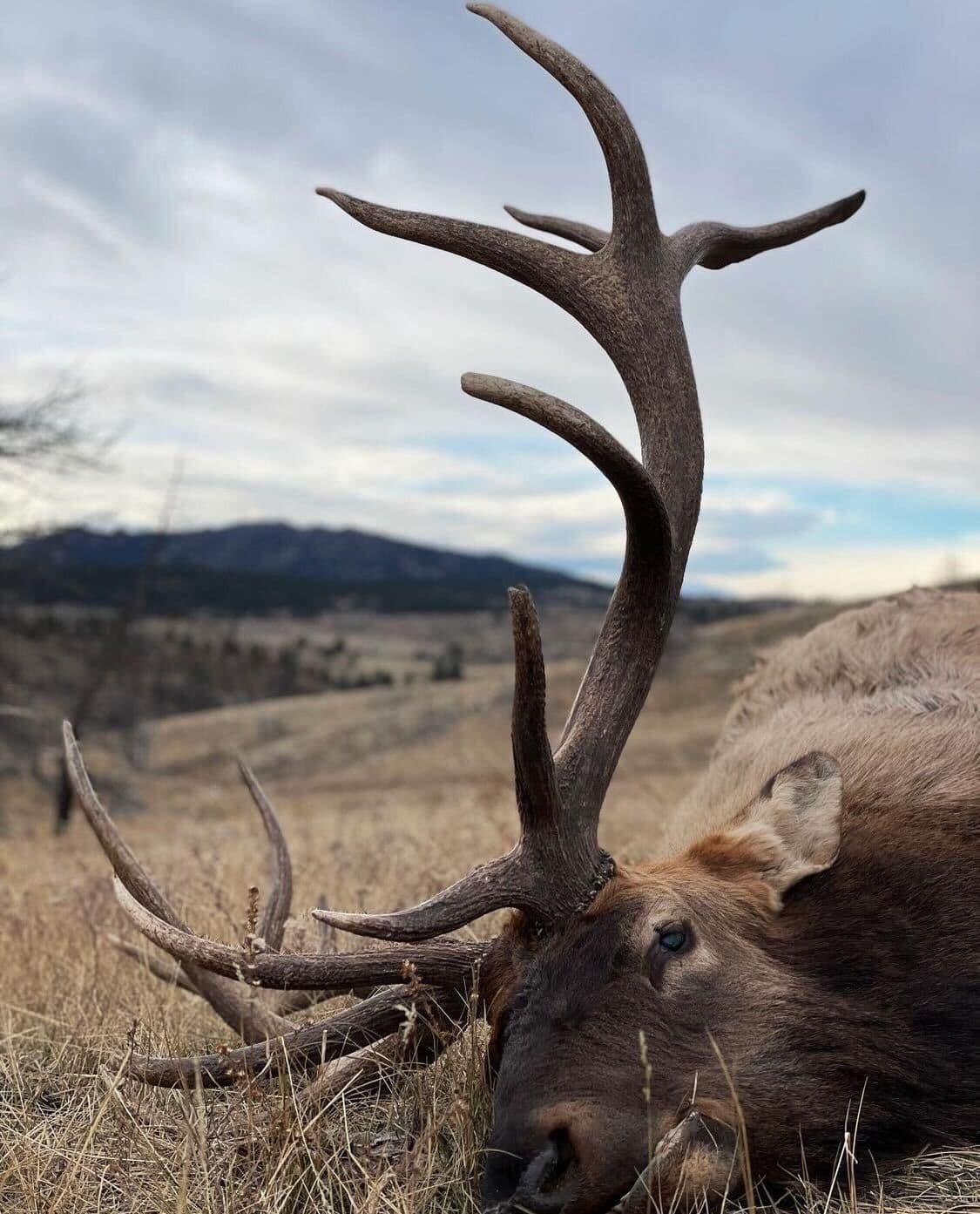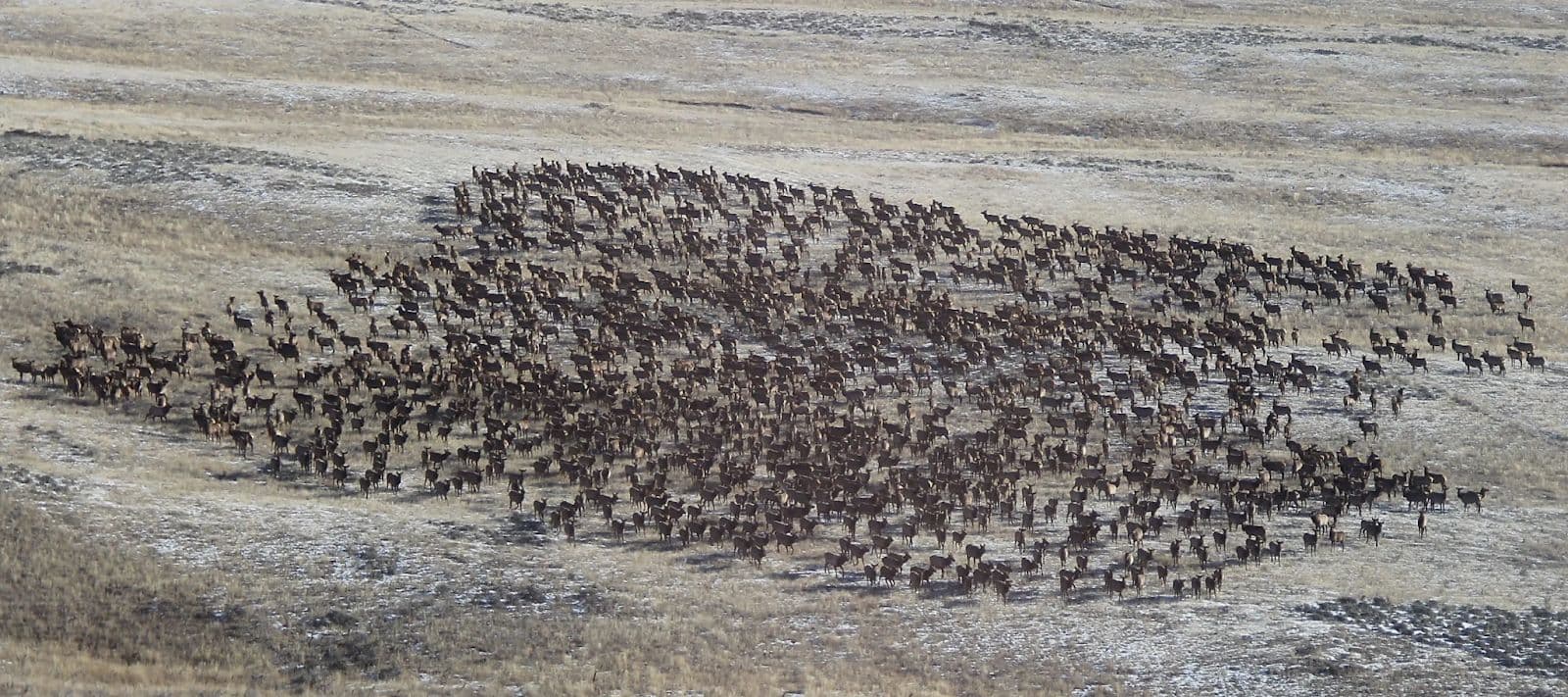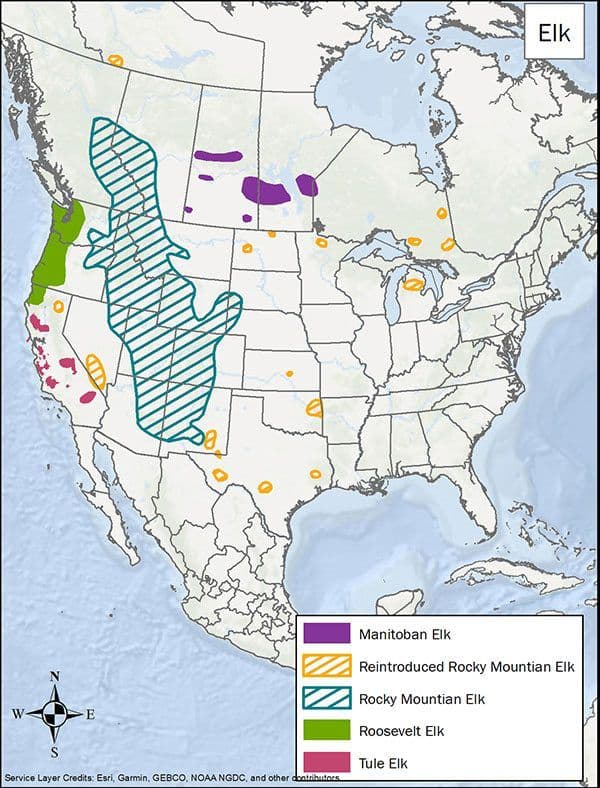Elk's Growing Numbers: Ranchers Bear the Brunt


Amanda Cook
10/10/2023
Fall is officially here, meaning it’s time to chase one of the largest and most cherished mammals in the West. Countless hours, financial investments, and endless preparation all lead up to these few short months. Memories will be made, shots will be taken, and legs will be tired, especially for those lucky enough to harvest an elk. They will enjoy a full freezer for months, or even years, to come.

Anyone who has had the opportunity to hunt elk knows that they’re smart, they seem to know exactly when hunting season starts. As the season progresses, we often find them less on public lands and more on privately owned land. Especially, ranching and farming lands as they receive less pressure and have an abundance of food and water resources for them to take advantage of. This can start to bring up a cascade of problems, including limited hunting pressure, crop damage and more. All of these issues have begun to surface in both the hunting and farm/ranching worlds. We teamed up with our on staff biologist and local hunters to help bring awareness to this growing topic that is often swept under the rug.

-A Wyoming Game and Fish Department staffer captured this aerial photo of a herd of 1,700 elk in the Laramie Mountains in 2014. The area is prone to “superherds” forming early in the fall. (Wyoming Game and Fish Department/Courtesy)-
Some of the largest issues landowners face are destroyed fences, depletion of hay and crops, and decreased carrying capacity for their cattle herds. Landowners are constantly needing to make the difficult decisions to decrease the number of cattle on their lands, invest in repairs to fencing and the land that they’re harvesting. Elk not only destroy fencing, but have a tremendous impact on forage availability on working livestock ranches. To put this issue into perspective, an adult elk eats about 6/10 of an AUM (animal unit month) of forage, equivalent to that of a young steer. When several hundred Elk get pushed onto these private lands, ranchers are forced to remove cattle from their land to mitigate overgrazing on their pastures. This can lead to reducing their overall herd numbers and their annual revenue they rely upon each year.
A recent study conducted in central Utah titled “Reducing the refuge effect: using private-land hunting to mitigate issues with hunter access”(Sergeyev, 2022.), looked at elk movements and their migration towards private lands in response to hunting. The study wanted to research the impacts of allocating more permits for hunting on private lands, and if it would reduce the number of elk that moved onto those private lands. During their study, 445 elk were outfitted with global positioning (GPS) collars. It was discovered that there was a shift of elk distribution from public lands to private lands specifically at the beginning of archery and rifle season. At the end of hunting season they discovered elk shifted back onto public lands. “Elk respond to changes in human activities and are adept at seeking refuge from hunting pressure.” (Sergeyev, 2022.) The study concluded that introducing more permits for private land hunts, which introduced more people into those areas, reduced the amount of elk, and length of time that elk were present on the private property.
In another article, based out of California, they spoke with 17 dairy and beef producing ranches. “Landowners report that elk density on private rangeland has steadily increased in recent years and poses a threat to their businesses due to loss of forage, damage to fences, and the corresponding liability risk posed by breached fences and errant cattle.” (Hanbury-Brown, 2021) The article also states that “the absence of crop and forage loss compensation, difficulty obtaining depredation permits, and low harvest quotas for recreational hunting limit landowner mitigation options.” (Hanbury-Brown, 2021) While every state has different licensing rules and regulations, along with differing conservation efforts it was found that “current elk management policies, including restricted hunting opportunities, do not adequately address elk conflict, creating novel challenges for wildlife officials tasked with reconciling elk restoration goals with a variety of stakeholders experiencing economic losses and threats to rural livelihoods.” (Hanbury-Brown, 2021) While this study was specifically done in California, it speaks to the common feelings and thoughts across all states with issues of depredation done by elk.

-Range map provided by International Union for Conservation of Nature and subspecies adapted from Bryant and Maser, 1982. Note: Only showing the North American range which has grown significantly in recent years.-
In 2022, a member of the Grant family’s Turtle Rock Ranch was interviewed by the WyoFile, reporting that “At any given time, there are more elk on our property than we own cattle.” (Mike Koshmrl, 2022) He believes that cattle ranchers are unable to coexist with the over abundance of elk on their properties. They are facing literal competition between their namesake cattle and the elk that are invading their property. Grant reported they have lost upwards of 270 tons of their 800 tons of hay they are producing from elk each year. (Mike Koshmrl, 2022)
Managing elk populations through hunter harvesting becomes a challenge if the elk are moving onto private property that the majority of the population does not have access to. Most outfitters on private lands are charging anywhere between $7000-16000 for guided elk hunts, which drives away a large portion of the public. This causes an increase of hunters on private lands decreases, while that on public lands increases.
There is not a magic wand that can be waived that will keep elk on public land, and there’s never going to be a singular solution to the problems that are caused. But there is a solution that can help, allowing public access onto private lands.Which is where Infinite Outdoors comes in.

-Business Marketing DirectorMichael Maroney with his recent Elk Harvest-
Infinite Outdoors, a revolutionary hunting and fishing access platform, committed to management, conservation and expanding access to private lands for outdoors enthusiasts - The fancy way of saying our company's goal is to expand access to privately owned lands. We are a D-I-Y hunting platform that is a tool to connect the public and private landowners. Forget the old process of door-knocking and bribing landowners, Infinite Outdoors now streamlines the process to an easy-to-use mobile app. Infinite Outdoors also comes in about ⅓ - ¼ lower in cost to the consumer due to the D-I-Y nature of our app, giving more people the opportunity to access these properties.
Ordinary hunting will never reduce all negative effects done by elk on ranch and farm land. However, in our effort to lessen the damages that are being experienced by ranchers and farmers, we hope to make a difference for those looking for a new solution. We have streamlined the process to connect landowners with hunters through our platform with hopes to offset financial losses from these large elk herds and increase pressure on them.
Given these circumstances, Hunting always has and will serve as one of the most effective (and fun) conservation tools in the modern world. Infinite Outdoors is a great solution for any landowner looking to generate income and resolve the impact that big game has on their land. Our in-house biologists will ensure detailed management plans will be in place as well as streamlined hunter access under landowner rules and regulation. If you or anyone else would like to learn more about how to list your property through Infinite Outdoors please contact us at (managment@infiniteoutdoorsusa.com.) Or if you are looking for a place to hunt elk download the Infinite Outdoors app or visit our website to find access for your next DIY hunt.
References:
Sergeyev, M., B. R. McMillian, L. K. Hall, K. R. Hersey, C. D. Jones and R. T. Larsen, 2022. Reducing the refuse effect: using private-land hunting to mitigate issues with hunter access. Journal of Wildlife Management 86:e22148. https://doi.org/10.1002/jwmg.22148
Ecology and Society 26(1): 23 https://www.ecologyandsociety.org/vol26/iss1/art23/
https://wyofile.com/in-the-laramie-mountains-too-many-elk-and-no-easy-fixes/